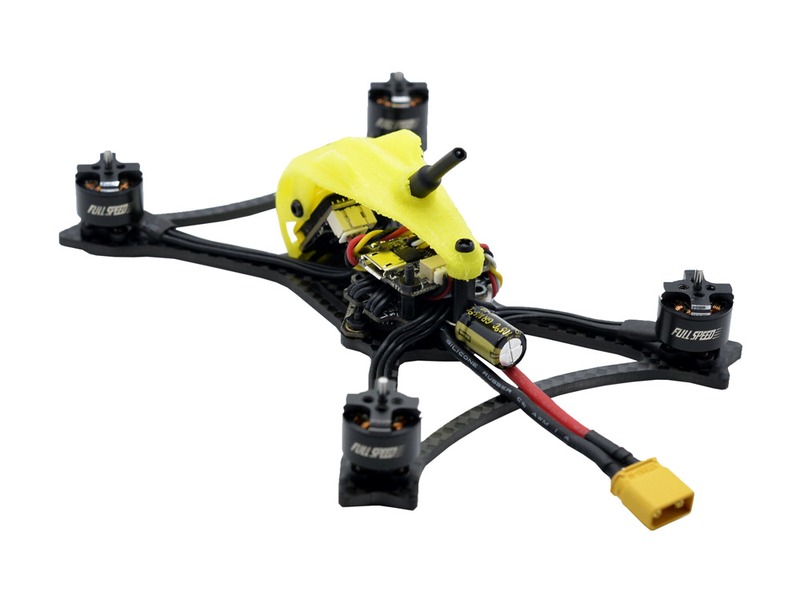Is quadcopter a VTOL?

Yes, a quadcopter is a type of Vertical Take-Off and Landing (VTOL) aircraft. A quadcopter is an unmanned aerial vehicle (UAV) that is propelled by four horizontally-mounted rotors. The rotors are typically arranged in an X- or H-configuration, and they provide lift, direction, and stability to the aircraft.
Quadcopters have many advantages over other types of aircraft, including their ability to take off and land vertically, their low cost and operating costs, and their ability to hover and maneuver in tight spaces. They are also relatively quiet and efficient, allowing them to be used in situations where other aircraft may not be suitable.
In addition to these advantages, quadcopters are also inherently safer than other aircraft due to their ability to hover and stay in one place, as well as the fact that they have four independently-powered rotors, making them less vulnerable to single-point failure. This makes them a great tool for aerial photography, search and rescue, and other applications.
While quadcopters are classified as VTOL aircraft, there are some differences between them and more traditional aircraft. For example, quadcopters typically do not have wings, so they rely on their rotors for lift and maneuverability. They also typically use a “quadcopter” configuration, meaning they are limited to four rotors. This limits their speed and range, as well as their ability to climb or descend quickly. Additionally, quadcopters are more affected by wind and other environmental factors than other aircraft, so they may need to be operated in more controlled environments.
Despite these limitations, quadcopters are still a viable form of VTOL aircraft. They have a variety of applications, from aerial photography to search and rescue, and are well-suited for many tasks that traditional aircraft cannot perform. Additionally, their low cost and operating costs make them an attractive option for many commercial and recreational users. Quadcopters are a versatile and capable form of VTOL aircraft, and they are here to stay.
Comments / Question
2. Make sure your quadcopter is in good working condition before each flight.
3. Follow all local laws and regulations for flying a quadcopter.
4. Make sure the area is clear of any other aircraft before taking off.
5. Use a spotter to help you identify any potential hazards.
6. Use a pre-flight checklist to ensure everything is working correctly before taking off.
7. Fly at a safe altitude and speed.
8. Avoid flying in bad weather conditions.
9. Use a GPS system to help you keep track of your location.
10. Monitor your battery levels and land before they get too low.
2. Accelerometer: This sensor measures linear acceleration and helps the quadcopter adjust its speed and direction.
3. Magnetometer: This sensor measures the Earth’s magnetic field and helps the quadcopter determine its heading.
4. Barometer: This sensor measures atmospheric pressure and helps the quadcopter determine its altitude.
5. GPS: This sensor helps the quadcopter determine its location and helps with navigation.
6. Ultrasonic Range Finder: This sensor helps the quadcopter measure distances to obstacles and helps with obstacle avoidance.
2. Complexity - Quadcopters are complex systems that require skill and knowledge to operate.
3. Vibration and Noise - Quadcopters tend to generate a lot of vibration and noise and can be quite loud, which may be a nuisance to bystanders.
4. Safety - Quadcopters are often considered dangerous due to their small size and potential for malfunctioning or crashing.
5. Limited Payload - Quadcopters are limited in the amount of payload they can carry, which limits their usefulness for certain applications.
2. Improved Agility: Quadcopters have superior agility and maneuverability than fixed-wing aircraft. This makes them ideal for emergency situations, such as search and rescue missions.
3. Easier Maintenance: Quadcopters require less maintenance than traditional helicopters because they have fewer parts. This makes them easier to repair and maintain.
4. Lower Cost: Quadcopters are generally cheaper to maintain and operate than traditional helicopters. This makes them an attractive option for commercial or recreational use.

